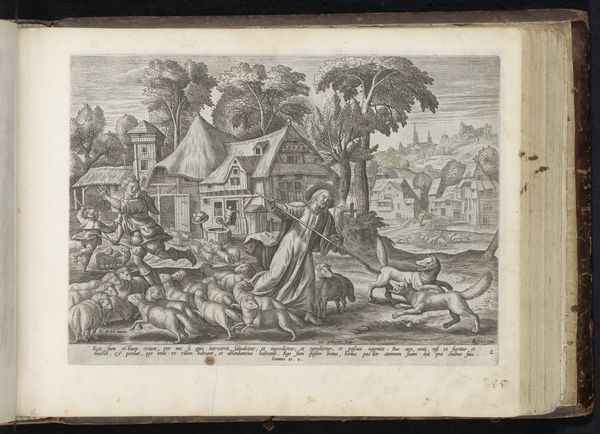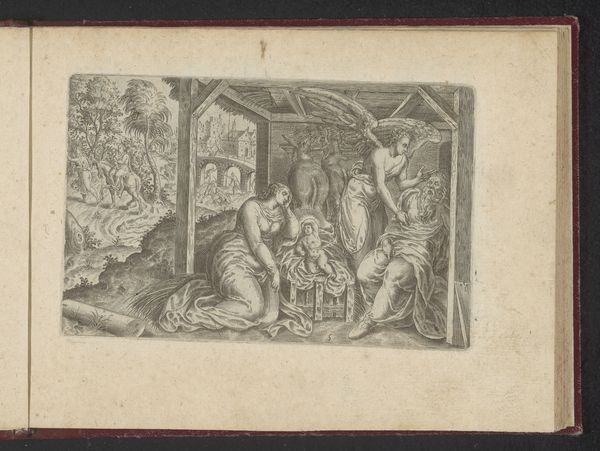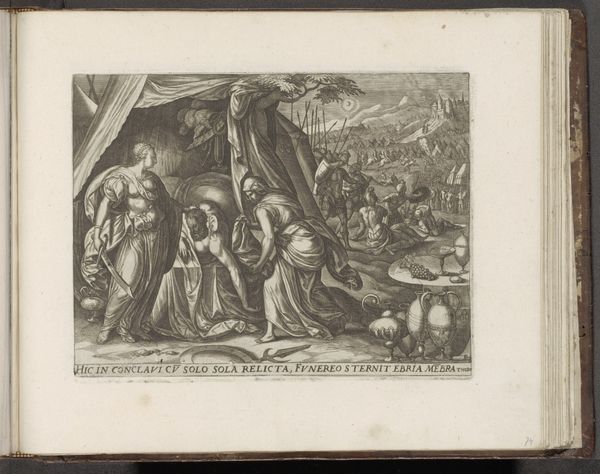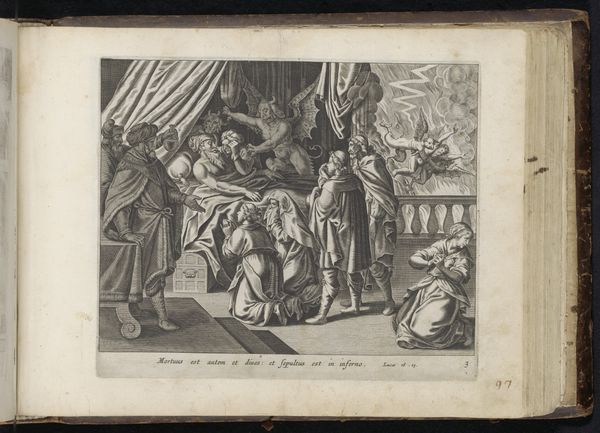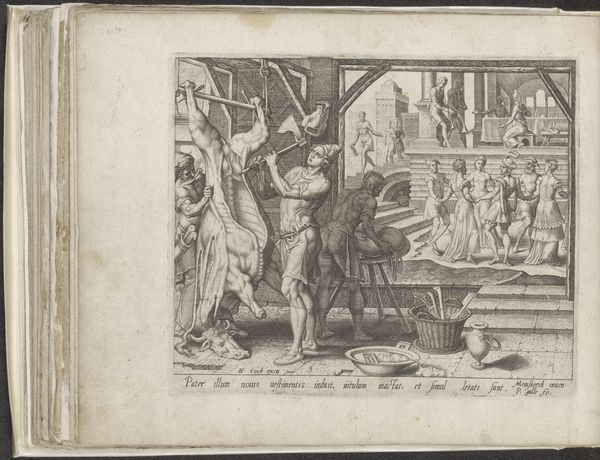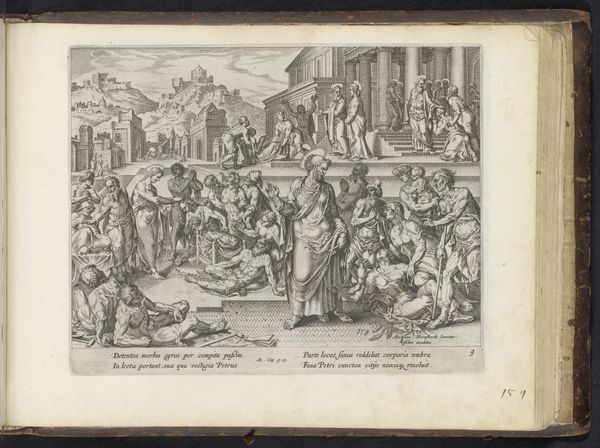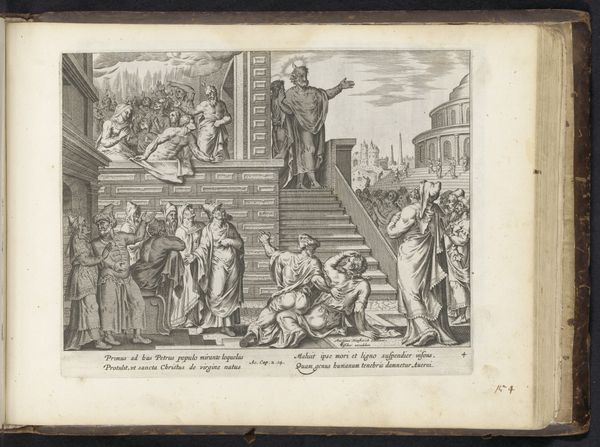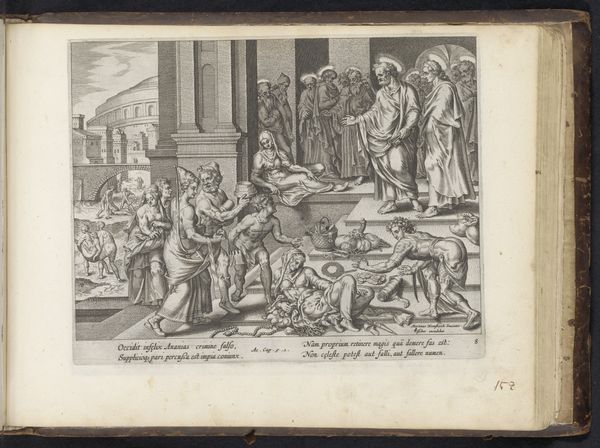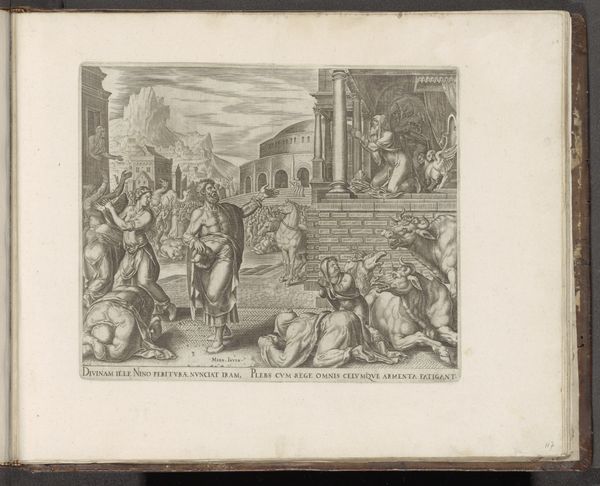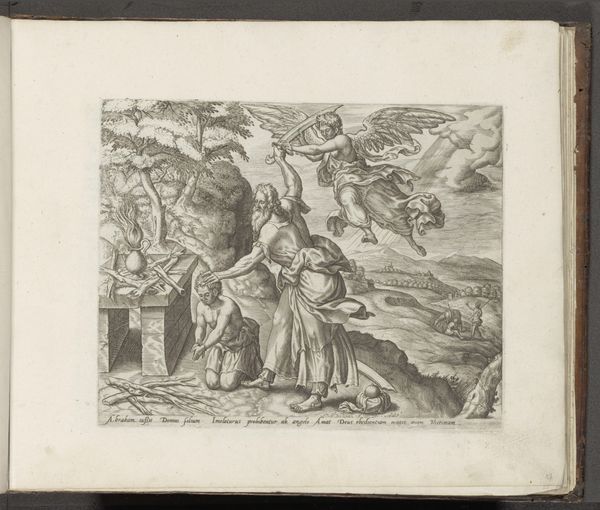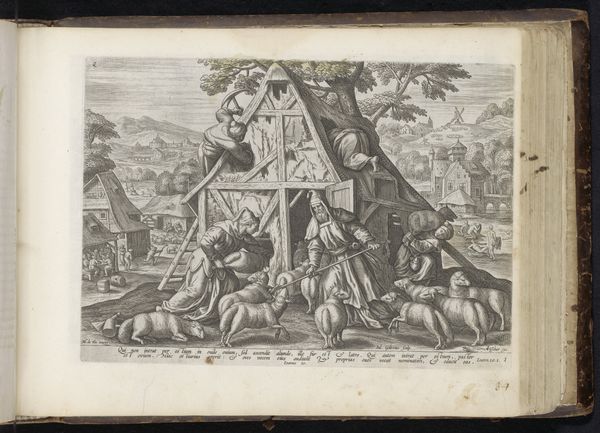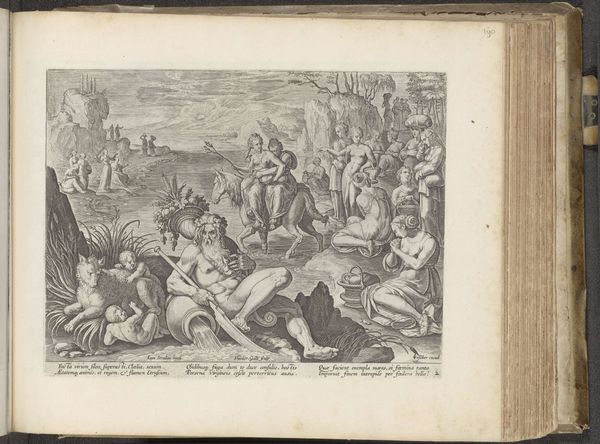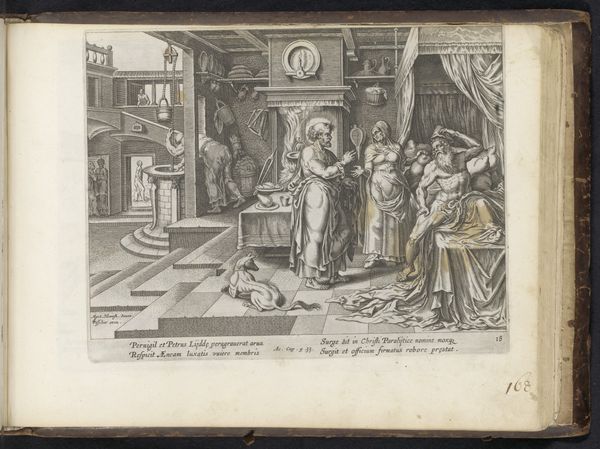
print, engraving
landscape
figuration
line
history-painting
northern-renaissance
engraving
Dimensions: height 206 mm, width 288 mm
Copyright: Rijks Museum: Open Domain
Editor: So, this is "Petrus als goede herder," or Peter as the Good Shepherd, a print dating back to sometime between 1560 and 1646 by Julius Goltzius. The detail is incredible given it's an engraving. I’m struck by how the artist has shown such everyday scenes in the midst of what appears to be a Biblical story. What do you see in this piece? Curator: From a materialist perspective, I see an intersection of labor, religion, and daily life represented through the very act of printmaking. The lines, etched with skill and repeated through the press, suggest a democratized dissemination of religious ideology intertwined with agricultural and societal labour. The work, mass produced as prints were intended, highlights the mechanics and manpower to further the story of Saint Peter. Note how this contrasts to unique pieces of devotional artwork, typically commissioned for the wealthy elite during this time. Editor: So, it's almost like the printmaking itself underscores the "good shepherd" theme—spreading the message to a wider flock? Curator: Precisely. Think about the physical act of engraving, the repetitive nature of the printing process and its purpose as a vehicle to reach people with imagery and doctrine. And note how landscape and labor are both present, with busy figures both mending the roof and caring for sheep. Consider the act of distributing not only this image, but how similar activities supported broader societal structure in Northern Europe. Do you think it resonates differently with viewers today than it did back then, knowing how prints were produced? Editor: Definitely. Seeing it as a product of labor, rather than just an illustration, makes me think more about its cultural impact. Curator: It shows that materiality can open up how we interpret and relate to this piece, giving us insight into both production and dissemination of images and religious views. Editor: I’ll certainly look at prints differently now. Thanks for that perspective.
Comments
No comments
Be the first to comment and join the conversation on the ultimate creative platform.
